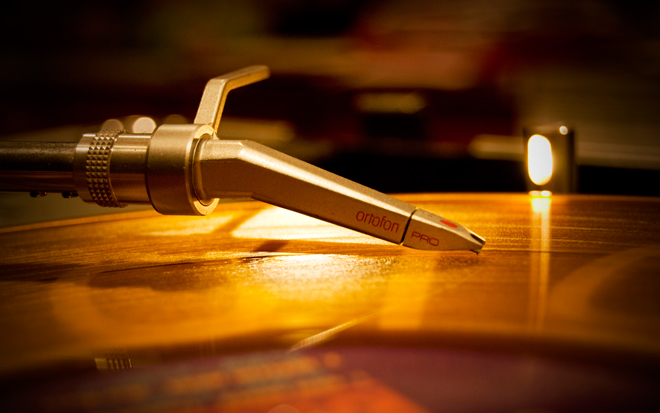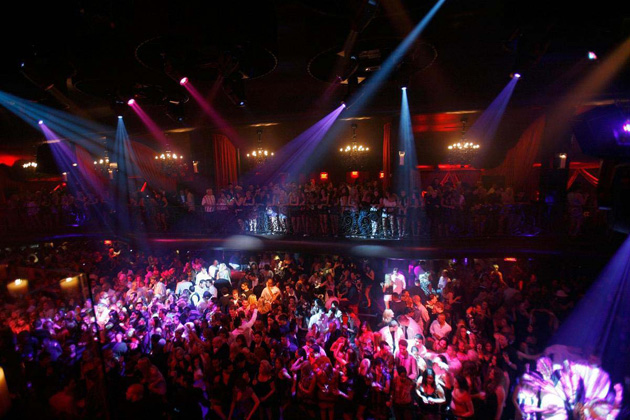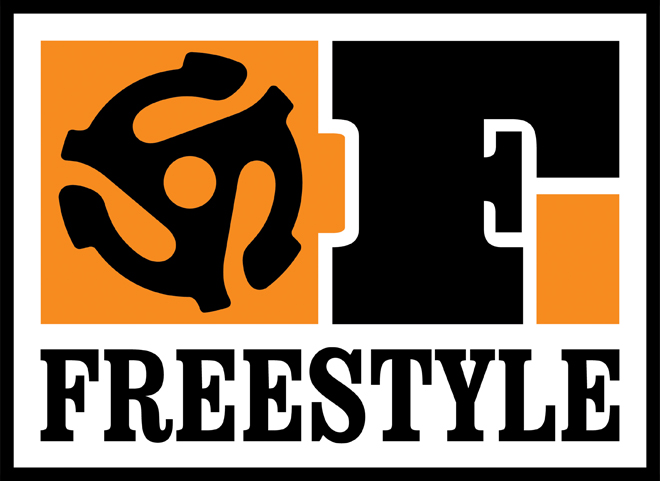Out of the quintessential electronic dance subgenres to emerge from the 1980s, house and techno frequently make it to the top of the list. Then, synthpop and electro, considering their limited staying power, follow. But an oft-forgotten sound that was equally prominent during the time, especially in American urban areas, was freestyle.
Known as “Latin hip-hop” at the time, freestyle emerged in New York City and Miami, each city with a different sound, and gained significant popularity in Philadelphia, parts of New Jersey, Chicago, and California. In fact, even though the subgenre informally died, or at least stepped away from the mainstream in the early 1990s, urban top 40 format stations in the mentioned cities still played freestyle into the ‘00s – and continue to include it, like NYC’s WKTU.
Yet because the subgenre never truly went global and its performers, like Lisa Lisa and Cult Jam, Stevie B, and Exposé, had hits that not only ranked on the Billboard Dance charts but also on the Top 40, Pop, and Hot 100 lists, dance music listeners, quick to dismiss something as “too mainstream,” do the same for freestyle.
However, interest in this side of electronic music began surfacing in 2013 – perhaps as a result of the closer intertwining of hip-hop and dance or as an inevitable reaction to last year’s retro leanings. In the fall, film The Return of Freestyle Music Celebrities essentially did a “where are they now?” follow-up with the subgenre’s definitive performers, including Brenda K. Starr and TKA, while just a few months later, Do Androids Dance compiled a list of key freestyle tracks for all EDM fans, including hits from Shannon, Debbie Deb, Lisa Lisa and Cult Jam, Exposé, the Cover Girls, Johnny O, Stevie B, Cynthia, and George LaMond.
Like synthpop and Eurodance, two respective products of their eras that never truly died away but met a similar fate of moving underground to maintain the sound, freestyle took a similar path – one, at least in major coastal U.S. cities, of touring, producing other artists, and having your sounds absorbed by the mainstream. And like these two supposedly-dormant dance music subgenres, the new performer is rare, with tours emphasizing older, established artists that may have scored a Billboard Hot 100 hit 25 years ago.

Some Background
Origins of its name aren’t known – some surmise it comes from the dancing style, others from experimentation – but freestyle’s sound essentially blends the popular electronic sounds of the early ‘80s – synthpop and electro – with Latin rhythms and instrumentation. Specifically, this recipe tended toward electro-style percussion with samples, Latin-style keyboards and the clava rhythm, use of drum machines, and BPM between 110 and 130.
The first freestyle track is said to have officially been Afrika Bambaataa and Soul Sonic Force’s “Planet Rock,” followed not long after by Shannon’s “Let the Music Play.” Others looking at the subgenre trace its origins back even further to Planet Patrol’s “Play at Your Own Risk,” C-Bank’s “One More Shot,” Kraftwerk’s “Numbers,” and Freeze’s “I.O.U.”
As singles popped up in the mid ‘80s, more clubs in New York and Miami played the music, including the Fun House and Roseland. Radio play in these markets helped push freestyle toward mainstream status, with its artists getting signed to such major labels as Reprise, Atco, Capitol, Columbia, Tommy Boy, and Warner Bros. in the late 1990s.
But just as dance music history tends to repeat itself, the major labels didn’t have a clue about how to market the subgenre, instead considering it one mass sound. As a result, the brighter, more polished Miami sound tended to have an upper hand to the rawer, darker tracks from NYC-area performers, and fared better on the radio.
At the same time, freestyle’s popularity meant mainstream pop artists began adopting the sounds and beats. What resulted were a handful of pop singles with a crossover sound, like Stacey Q’s “Two of Hearts,” Taylor Dayne’s “Tell It To My Heart,” Pretty Poison’s “Catch Me (I’m Falling),” and Nu Shooz’s hits. These tracks, in certain cases, outperformed songs from true freestyle artists.
This was just one aspect that started the mainstream fall of freestyle, however. According to a written history from Tommy Boy and Timber Records’ Joey Gardner, the producers hurt themselves by pushing low-quality tracks to the radio for just a quick buck, while the artists reaching the charts and getting played on MTV adopted more of a pop or hip-hop sound.

By the 1990s, a “new generation” of freestyle performers emerged, headed informally by Lisette Melendez’s “Together Forever.” Aside from older freestyle performers having one more hit during the ‘90s, others to emerge during this time included Rockell, Angelina, and Lil Suzy.
But mainstream trends in the ‘90s ultimately extinguished freestyle’s very brief mainstream popularity; the subgenre got caught in the crossroads of being “too urban” for the dance music sounds coming from Europe, but being “not urban enough” for U.S. radio stations that switched to mostly hip-hop and R&B music. Ultimately, having its niche taken over by Eurodance and trance in the dance music world and by hip-hop and pop R&B performers in urban markets made freestyle obsolete.
Renewed Interest
Just like pop music collaborations, officially David Guetta working with the Black Eyed Peas, started bringing house music up the mainstream ladder in the late ‘00s, freestyle’s far lesser return began at the same time. Some attribute this to Pitbull, himself a Latin crossover artist that has dabbled with electronic sounds, working with Lisa Lisa on her 2009 album Life ‘n Love and with “King of Freestyle” Stevie B on a cover of “Spring Love.”
Around this same time, Pitbull and other artists began returning to ‘80s freestyle records for sampling or covers, including Debbie Deb’s “When I Hear Music” and “Lookout Weekend.” The former appeared as a sample on Pitbull’s “Fuego” and as a cover by rapper Kid Sister, while Kelis sampled “Lookout Weekend.”
At the same time, freestyle tours keep the subgenre alive in certain U.S. urban markets. At the moment, Super Freestyle Explosion has been going around California locations, while on March 1st, Forever Freestyle, in its eighth year, had Fever Records’ Sal Abbatiello bringing together Stevie B, Lisa Lisa, TKA, Sa-Fire, Johnny O, Cynthia, Lydia Lee Love, Nayobe, Sammy Zone, and Fonda Rae for a performance at the Lehman Center for the Performing Arts in the Bronx.
Prior to the performance, Examiner.com caught up with Stevie B, who explained that interest in freestyle keeps him on tour. However, he observed, the crowds include both adults and younger fans – possibly as a result of recent mainstream interest in dance music. “Dance music is returning,” he explained. “You have new kids coming into the music but folks are longing for the old sound of free style disco dance music. People are passing the music down the family line with folks introducing the music to their kids and their kid’s kids. Sometimes I am amazed how young the audience is that is listening to our music.”
Other older freestyle performers notice a similar trend. In speaking with the Village Voice, Todd Terry, who was behind Giggles’ “Love Letter” and Fascination’s “Why You Wanna Go,” sensed that another mainstream wave may soon occur. “They’ll be like, ‘Remember that record? That record’s dope,’” he explained, about listeners discovering freestyle for the first time. “Or ‘Where did you get that? You still got that?’ Some people feel as though they have all of your records. I have all my old records. It’s just cooler. We need a new sound out there, and I better do it before Rihanna does it. She’s gonna come out with a freestyle record, and everyone’s going to think she thought of it.”
As a contrast, however, TKA producer Kayel explained to NBC Latino before the Forever Freestyle performance that listeners want something different — something that sounds upbeat but has angst. As this combination has been missing from urban radio for some time, that’s why listeners are gravitating toward freestyle again. “Today’s music is good, but it’s more macho bravado,” he said. “TKA, and freestyle music as a whole, still has that bravado, but it is still able to relate to feelings and truth across the board.”
Nevertheless, what essentially keeps freestyle from gaining the same prominence as house or even synthpop or Eurodance is the lack of new performers. Synthpop returned toward the late ‘00s with hits by La Roux and Frankmusik, while Basshunter and Cascada, in varying degrees, kept Eurodance on the charts on both sides of the Atlantic.
But when you look at the labels behind freestyle these days, Thump relies heavily on the classic performers to push compilation albums, while Tasmania Records – a dance music label that has included newer freestyle performers like Jonelle and Joe Zangie on its roster – appears to be the only consistent home for finding newer talent.
Tasmania’s artists aside, Khalid Rivera is the only newer freestyle performer who’s found some semblance of success. Videos for songs “Every Night” and “Salvation” got to the top of MTV LOGO’s video countdown, while his tracks have gotten onto King Of Spins, NorthEast Dance, Reverbnation, and Masspool charts.
In one sense, freestyle’s a sound that never evolved to the times, resting on the same formula that garnered popularity nearly 30 years ago, but as dance music turns itself toward older sounds, to disco, electro, synthpop, and garage, do you think freestyle has a chance to make a comeback?




